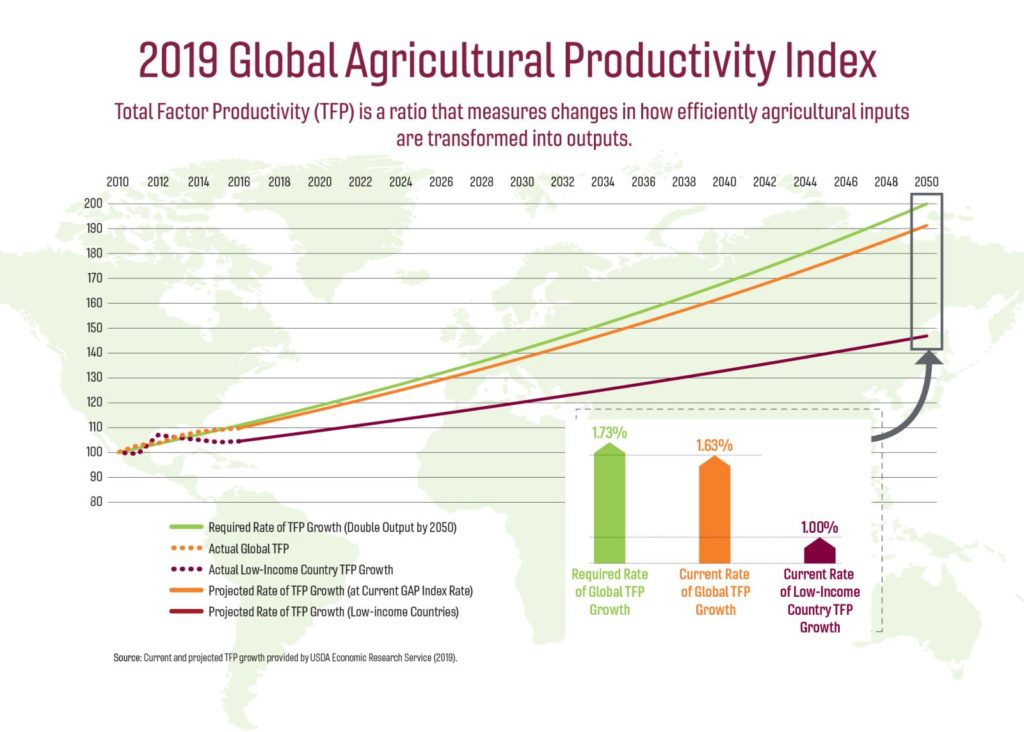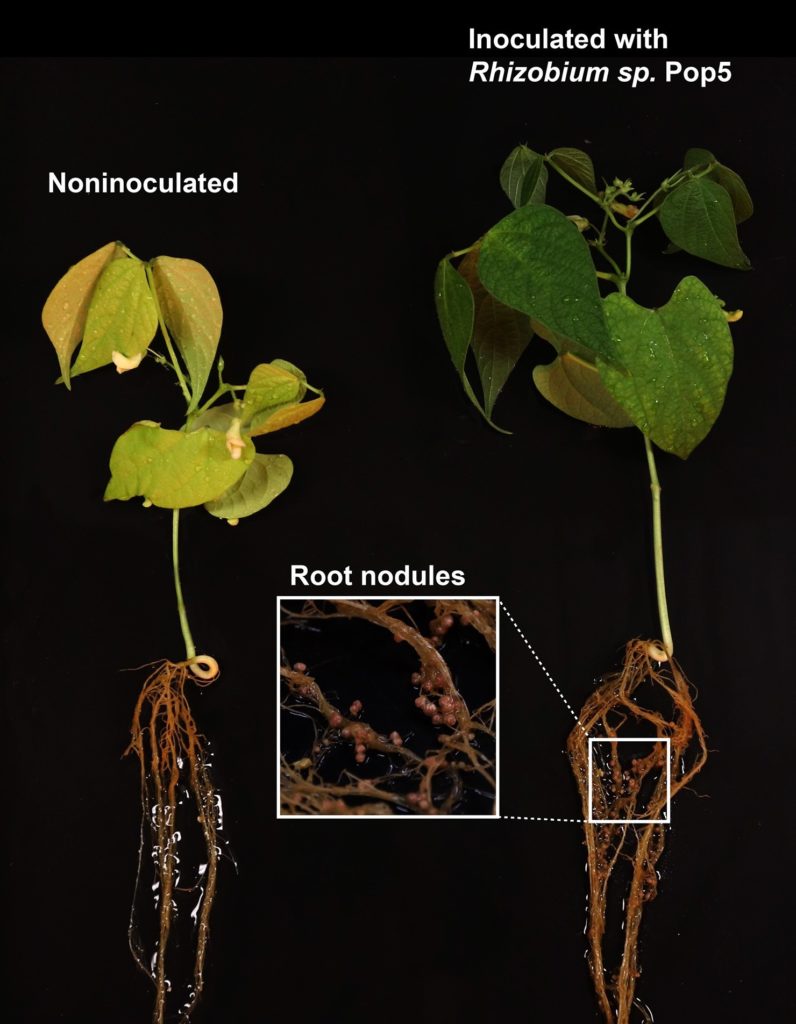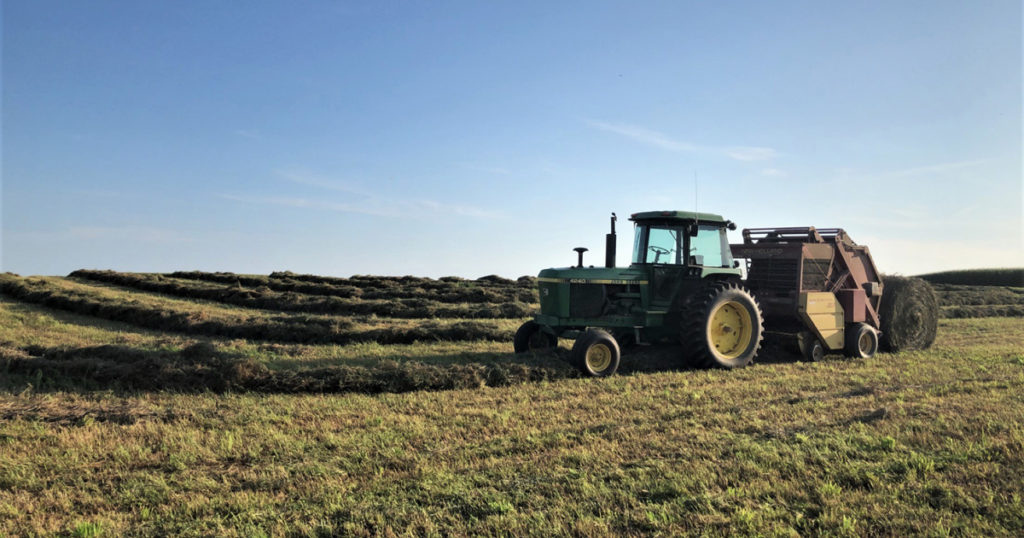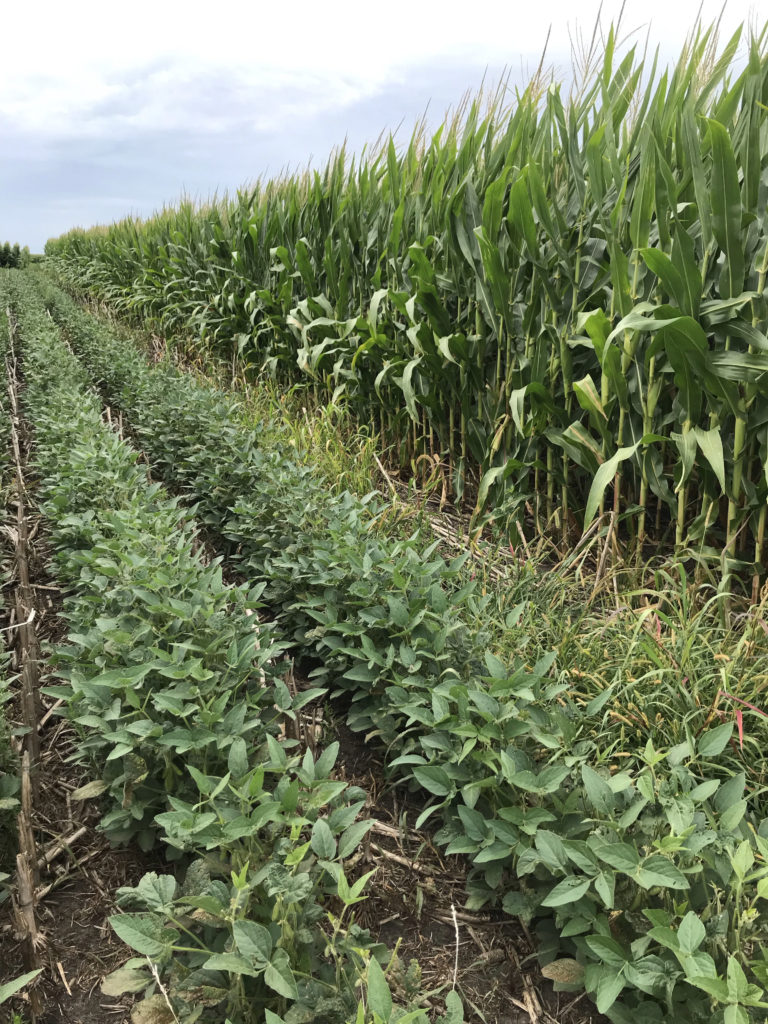Lifestyle may be central to maintaining health in a small society undergoing change in livelihood and nutrition, Baylor University researcher finds
Tag: Agriculture
How hunger makes food tastier: a neural circuit in the hypothalamus
Researchers at the National Institute for Physiological Sciences in Okazaki identify the neural pathways that cause hunger-induced increases in the preference for sweet foods and the decreased sensitivity to aversive tastes in mice
Ag-to-energy farmland use is focus of new $2.4 million grant
ITHACA, N.Y. – The U.S. Department of Agriculture and the National Science Foundation have awarded a three-year, $2.4 million grant to a team of Cornell University researchers who will study how agriculture-to-energy land-use conversions – putting solar panels or wind…
Clemson researcher creating perennial grasses that need less water and are fuel source
CLEMSON, South Carolina — Clemson University College of Science Professor Hong Luo has received a $500,000 grant from the U.S. Department of Agriculture National Institute of Food and Agriculture to develop genetically improved and more robust turfgrass and switchgrass. These…
Biodiversity improves crop production
A new study involving more than 100 researchers around the world demonstrates the benefits of biodiversity for humans
Changes in photochemical reflectance index can be used to monitor crop condition
Lobachevsky University researchers improve methods for remote monitoring of the condition of crops grown in fields and greenhouses, including the early diagnosis of stress effects on plants
High rates of ‘cold-loving’ fungus infection found in frogs from warm environments
Disease reservoirs may contribute to worldwide decline of frog populations

New report says accelerating global agricultural productivity growth is critical
A live webcast of the GAP Report Launch event will be available October 16, 2019 from 12:00 PM to 1:30 PM Eastern time: https://globalagriculturalproductivity.org

Straight to the source
New research is transforming technology for biomedicine and beyond. Chemists are simplifying experiments in mass spectrometry, a method commonly used by chemists, biologists, physicists and forensic scientists for analyzing molecular materials.
New survey confirms muscadine grapes are affected by parasitic nematodes
Native to the Southeastern United States, muscadine grapes are a superfruit. With high levels of resveratrol, phenols and antioxidants, they are known to help fight cardiovascular disease and cancer-causing agents. Muscadines are also favored by small industries making juices, pies,…
Harnessing plasmonics for precision agriculture worldwide
A Moore Inventor Fellowship is supporting a Duke engineer in her quest to develop a small, inexpensive hyperspectral camera
Artificial intelligence and farmer knowledge boost smallholder maize yields
Data-driven agriculture can increase smallholder production threatened by weather and climate change, but data scientists need to work with farmers and governments. Four years of collaboration in Colombian maize fields shows what success looks like
NYU Abu Dhabi researchers release a new genome sequence of the date palm
Discovery further uncovers the genetic basis for important fruit traits of an essential MENA region food source
RUDN University veterinarians developed a way to protect carp from the harmful effects of ammonia
Veterinarians from RUDN University have developed a way to increase the resistance of carp, the most common fish in fish farms, to the harmful effects of ammonia, which is found in almost all water bodies. The researchers found that the…
New research to boost global date fruit production
New major project aims to improve global date palm production and protection
Celebrating the health and nutritional potential of underutilized crop species
Oat, quinoa, emmer and more to be topic of symposium
Private property, not productivity, precipitated Neolithic agricultural revolution
The Neolithic Agricultural Revolution is one of the most thoroughly-studied episodes in prehistory. But a new paper by Sam Bowles and Jung-Kyoo Choi shows that most explanations for it don’t agree with the evidence, and offers a new interpretation.
ERC Synergy Grants awarded to 37 research groups to take on the biggest challenges
Curing cancer, tackling climate change, forecasting earthquakes – such challenges and other scientific quests are simply too big to address for one researcher – even the most excellent. That is why the ERC awards the Synergy Grants. In the 2019…
Linking soil and environmental health
Changes in soil microbes, soil salinity to be covered in symposium

Secrets to climate change adaptation uncovered in the European corn borer moth
Biologists looked at the European corn borer moth and pinpointed variation in two circadian clock genes – per and Pdfr – that enable different populations of the moth to adapt their seasonal transitions to climate change
CABI scientists track wheat aphids and their natural enemies for better pest management in Pakistan
For the first time, CABI scientists have studied the distribution and population dynamics of wheat aphids and their natural enemies in Pakistan through seasons and periods of time; this research could be useful to develop better pest management methods
Noah-MP captures major hydrological patterns in China
The Noah land surface model with multi-parameterization options (Noah-MP) simulates the major spatiotemporal patterns of hydrological variables in China, a vast country characterized by complex terrain and large river basins across a wide range of climates. “This is an important…
$1M Walmart Foundation grant to fund Tata-Cornell ag study
The Tata-Cornell Institute for Agriculture and Nutrition (TCI) has been awarded a $1 million grant from the Walmart Foundation to assess challenges facing small-farm aggregation models in India and Mexico.
Mapping white clover heritage
Four-leaved clovers may or may not bring good luck. What’s indisputable is that all white clovers, whether with three or four leaves, have many benefits. The United States Department of Agriculture calls white clover “one of the most important pasture…
Researchers find multiple effects on soil from manure from cows administered antibiotics
Use of antibiotics is under heightened scrutiny due to the increased prevalence of antibiotic-resistant pathogens. While the primary focus is on more stringent use of antibiotics in medical settings, the use of antibiotics in the livestock sector is gaining increased…
BTI researchers unlocking hornworts’ secrets
Figuring out the genetic underpinnings of hornworts’ weird biology could help researchers boost agricultural output, use less fertilizer, and gain new insights into plant evolution
$1 million Walmart Foundation grant to fund Tata-Cornell ag study
ITHACA, N.Y. – The Tata-Cornell Institute for Agriculture and Nutrition (TCI) has been awarded a $1 million grant from the Walmart Foundation to assess challenges facing small-farm aggregation models in India and Mexico. The grant will fund a two-year study,…
No soil left behind: How a cost-effective technology can enrich poor fields
Smallholder poverty in sub-Saharan Africa is often linked to sandy soils, which hold little water and are low in nutrients. A new technology may be able to enrich fields and farmers without massive investments in irrigation and fertilizer

Ambitious strategies to combat pests and disease in organic agriculture
Iowa State University researchers have received a grant to look at innovative ways that allow organic fruit and vegetable growers to combat pests, weeds and disease. Much of the research centers on mestotunnels, or material used to create a physical barrier to protect plants from certain pests. The practices to be analyzed could help organic growers with management challenges without the use of conventional or organic pesticides.
Datasets can lead to risk-reducing solutions in agriculture
Predictive agriculture models can inform farming decisions

Scientists Discover New Antibiotic in Tropical Forest
Scientists from Rutgers University and around the world have discovered an antibiotic produced by a soil bacterium from a Mexican tropical forest that may help lead to a “plant probiotic,” more robust plants and other antibiotics. Probiotics, which provide friendlier bacteria and health benefits for humans, can also be beneficial to plants, keeping them healthy and more robust. The new antibiotic, known as phazolicin, prevents harmful bacteria from getting into the root systems of bean plants, according to a Rutgers co-authored study in the journal Nature Communications.
Pesticide companies leverage regulations for financial gains
PRINCETON, N.J.–Pesticides are present in many food products and play a central role in the production of traded agriculture, giving them global and economic significance — and necessitating proper regulation. Yet, some pesticide companies may put profit ahead of protecting…
Using plasma to find Alzheimer’s
National Institute on Aging awards $225,000 for work to improve Alzheimer’s diagnoses
Rice irrigation worsened landslides in deadliest earthquake of 2018 finds NTU study
Irrigation significantly exacerbated the earthquake-triggered landslides in Palu, on the Indonesian island of Sulawesi, in 2018, according to an international study led by Nanyang Technological University, Singapore (NTU Singapore) scientists. The 7.5 magnitude earthquake struck the Indonesian city on 28…
The 11th International Conference on High Pressure Bioscience and Biotechnology
The increasing demand of sustainable and natural food products is booming the awareness of alternative processing technologies. At the Department of Food Science at the University of Copenhagen we are therefore glad to host the 11th HPBB2020 conference

What is the difference between square and round hay bales?
Advances in technology allow for baling larger amounts of hay, faster
Nodulation connected to higher resistance against powdery mildew in legumes
St. Paul, Minnesota–Scientists have long known that nodulation is important to plant health. Nodulation occurs when nodules, which form on the roots of plants (primarily legumes), form a symbiotic relationship with nitrogen-fixing bacteria that deliver nutrients to the plant. This…
Rutgers Expert Can Discuss Exceedingly Dry, Warm September in N.J.
New Brunswick, N.J. (Oct. 3, 2019) – Rutgers University–New Brunswick Professor David A. Robinson, the New Jersey State Climatologist, can provide insight on one of the driest and warmest Septembers in New Jersey since record-keeping began in 1895. Last month was the sixth driest September…
Complete genome of devastating soybean pathogen assembled
An international research collaboration has successfully assembled the complete genome sequence of the pathogen that causes the devastating disease Asian soybean rust. The research development marks a critical step in addressing the threat of the genetically-complex and highly-adaptive fungus Phakopsora…
First maps of areas suitable for spotted lanternfly’s establishment in US and world
WAPATO, WASHINGTON, October 3, 2019–Maps identifying the areas suitable for establishment of the spotted lanternfly (SLF) in the United States and other countries have been published in the Journal of Economic Entomology by Agricultural Research Service scientists. The SLF, originally…
Toxin promotes cattle-to-cattle transmission of deadly Escherichia coli strains
Shiga toxin subtype 2a (Stx2a) may play a key role in promoting the colonization and transmission of life-threatening Escherichia coli strains in cattle, according to a study published October 3 in the open-access journal PLOS Pathogens by Tom McNeilly of…

Corn and soybean rotation could pose long-term tradeoffs for soil health
A new study examines the mechanisms that drive the decomposition of organic matter in soils that undergo long-term corn and soybean crop rotations. The study shows how corn and soybean rotations can provide important environmental and management benefits for farmers, but the practice also comes with tradeoffs that some farmers may wish to address by adjusting their management practices.
Managing stormwater and stream restoration projects together
Both stormwater control and stream restoration are proven ways to reduce erosion along water channels. Often, though, each method is managed by a different urban land-management department, measuring different success values. Efforts are rarely coordinated due to funding and other…
USDA grant to study transport of pollen from hemp and genetically engineered switchgrass
A new season is often marked by the eruption of pollen into the air. As these invisible grains fall back down to Earth, those who suffer from grass and tree allergies are gravely impacted. And because allergy season is so…
Updates on balancing food production with environmental quality
Symposium to cover cross-cutting issues that apply to growers
Retired UT extension specialist inducted into National Hall of Fame
John Campbell recognized by National Association of County Agricultural Agents
Horse nutrition: Prebiotics do more harm than good
Prebiotics are only able to help stabilise the intestinal flora of horses to a limited degree. Before they can reach the intestines, commercially available supplements partially break down in the animals’ stomachs, which can lead to inflammation of the stomach…
Study finds rising ozone a hidden threat to corn
CHAMPAIGN, Ill. — Like atmospheric methane and carbon dioxide, ground-level ozone is on the rise. But ozone, a noxious chemical byproduct of fossil fuel combustion, has received relatively little attention as a potential threat to corn agriculture. A new study…
Gene responsible for lutein esterification in bread wheat identified
This work provides insight into the timing and control of esterification, related to storage and nutritional qualities of bread wheat and other grains.
Invitation to media: Insect science takes center stage in St. Louis, November 17-20
‘Insect Decline in the Anthropocene’ symposium highlights jam-packed Entomology 2019 schedule